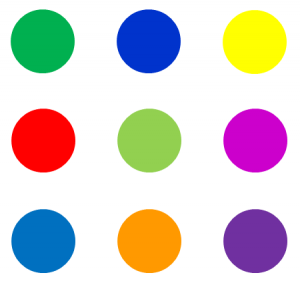How you look at the problem determines how you solve the problem.
If you can’t solve your problem, change your perspective. In a word, it’s called reframing.
A frame is a piece of wood or plastic that surrounds a photograph or a piece of art. It frames the perspective of what we see. A window frame does the same thing. So does a time frame. Every way you look or perceive something is framing. To physically or mentally change your perspective is reframing.
From a psychological point of view, “cognitive reframing” means indentifying – and then changing – the way a person perceives and understands a situation, an experience, an idea, or an emotion. By challenging your own perspective, you also shift how you might deal with or address the current situation.
Reframing is an important creative skill
In creativity, the basic concept applies here as well. By changing how you understand or perceive a problem, you reframe the situation in ways that allow the mind to also change how it might solve the problem.
Some people get stuck in their own thinking patterns as they try to solve a problem, preventing them from creating a better solution or situation. By learning (or forcing) a new perspective, reframing challenges our mind to reconsider what we believe, what we think, and how we act.
Oftentimes, the thinking pattern is an assumption, which is a situation, thing or idea that you believe is true without question or proof. An assumption can also be a lack of information about something. Because your mind doesn’t like a vacuum, it creates an assumption in its place. More so, most of us make negative assumptions vs positive assumptions, especially when we don’t like the situation, person or idea.
Reframing is an ideal method to address and get rid of assumptions. Go here for examples of reframing.
The nine-dot puzzle is a good reframing example
The familiar nine-dot problem is reframing wrapped in a brain-teaser. The objective is to draw through all nine dots using four continuous and connected straight lines.
Most people believe the line can’t go outside the perceived visual box of the outer eight dots. To solve the riddle, you have to “think outside the box.” Once you shift your assumption that you can only draw within the perceived box, you can solve the problem.
If you can’t be fussed to solve the puzzle, go here for the answer, plus two other variations of the same brain-teasers.

Reframing is an important creative thinking skill. It forces you to re-think your opinions, attitudes, beliefs and actions. By doing so, it opens up the possibilities to different ways, choices, or actions.
It changes how we …
Brainstorm
Make decisions
Talk to people
By the way, did you know you already can see two different perspectives?
Try this trick. Hold your pointing finger upright at arms’ length. Close your right eye. Your left eye gives you one perspective. Leave your arm where it’s at, but close your left eye instead. Your right eye gives you an entirely different perspective.
Have you used reframing before? How have you used it to help solve a problem? Please add your thoughts and comments below.


No comment yet, add your voice below!